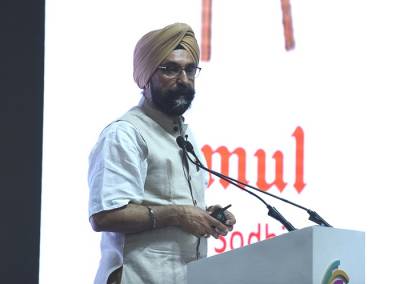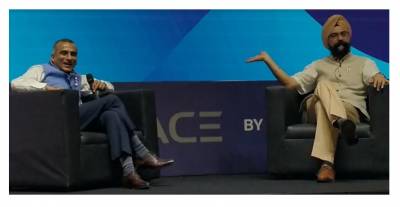Amul never spent more than 1% on advertising: RS Sodhi
The fifth edition of ZeeMELT, which puts the spotlight on disruptive marketing, kicked off in Mumbai on May 30, 2019. The two-day conference features an extensive line-up of speakers – experts, leaders, and professionals who have themselves disrupted the global marketing arena.
Commencing Day 1’s proceedings was RS Sodhi, Managing Director, Gujarat Cooperative Milk Marketing Federation (GCMMF), who shed light on the unorthodox thinking that makes its flagship brand Amul the leading FMCG company in India. Sodhi, who has been MD at GCMMF since January 4, 2011, has been instrumental in scripting the success of India’s biggest diary brand. He spoke about the unconventional and nonconformist marketing tactics that the company uses to capture the pulse of India and hence, the consumer’s mind space.
Giving an idea of the size of the business operations, Sodhi said that Amul is the biggest food company created by farmers at Rs 45,000 crore per annum with just two liters of milk 73 years ago. Today, the company has 3.6 million farmers who are shareholders in the company which runs on the co-operative model. “Each one of us owns a share and the company can’t be sold. In the last 10 years, our CAGR is 17 per cent,” he informed.
Read More: Amul fires ICC World Cup salvo as Afghan cricket team's sponsor
The business model followed is unique as well, as against the conventional business of B2B or B2C or C2C – wherein it is easy to start with B2B and then get on to B2C and then e-commerce, Amul’s business model comprises C2C, which is Cow to Consumer, and B2C, which is Buffalo to Consumer.
Back in 1946, when the co-operative was formed, it was none other than India’s first Deputy Prime Minister Sardar Vallabhbai Patel, who had advised, “If you want to get best price for your produce, you should process and market it under your own brand name.”
Sodhi remarked that this heritage brand which started 73 years ago was a disrupter then and brought about a revolution in the dairy sector and continues to be a disrupter even now. At the same time, he said, “But the product itself – milk – is not disruptive, but soothing. The ‘Utterly Butterly’ butter to the milk that India consumes, the central thing to all of Amul’s campaigns is their catchy lines, which have stayed with of us for many years.”
Throughout the years, Amul’s ad campaigns have always maintained a consistency. “Once a campaign position has been taken, we have not changed at all, we listen to new ideas and creatives, but then we decide to stick to what we have. When a campaign is working, why change it? ‘Utterly Butterly Delicious’ is more than 50 years old, ‘Taste of India’ is about 20 years old, ‘Amul Doodh Peeta hai India’ was coined in 2000. Any food brand spends about 15-18 per cent on advertising, but if you look at our advertising spend, it has been than less 1 per cent,” he added.
Sodhi further said that Amul has never believed in celebrity endorsements, but have depicted celebrities in the Amul hoardings which are the most topical. “We get calls from PR personnel and celebrities thanking us. All this is achieved without spending a penny,” he added.
Stressing on consistency, Sodhi maintained that the campaigns, communication and consistency in the product and the communication has made what Amul is today. “If you want your brand to succeed, not for a decade but for centuries, give more to your supplier, your service provider and your consumer, much more than what they are giving you. As Dr Kurien used to say, ‘This give more to earn more is ingrained in the DNA of Amul’,” concluded Sodhi.







Share
Facebook
YouTube
Tweet
Twitter
LinkedIn